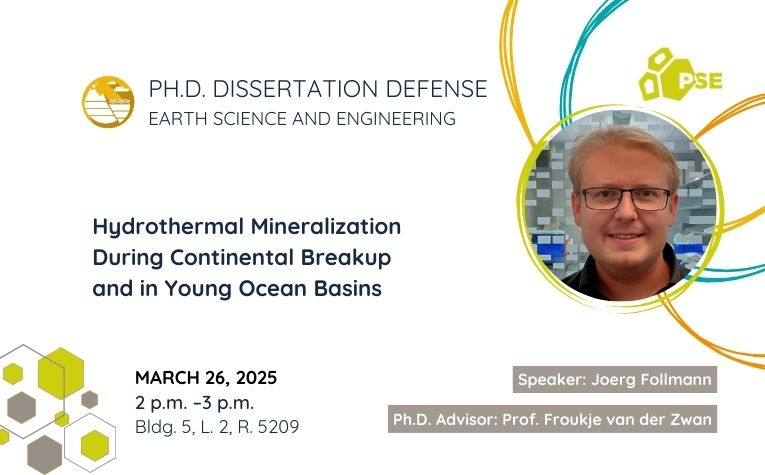

Mar 2025

Abstract
Continental breakup and the start of seafloor spreading is an essential process on Earth that shapes our planet and forms continental margins. Despite their societal importance for coastal communities, marine ecosystems, and resources, the process of continental breakup is poorly constrained. Particularly, the mechanisms and influence factors of hydrothermal fluid circulation in the context of continental breakup are largely unstudied but could be of relevance in supporting the mechanical weakening of a rift system by influencing the generation of melt or affecting the properties of a newly formed crust by cooling of the system. Understanding these processes by characterizing the physicochemical properties of the hydrothermal fluids recorded in hydrothermal mineralization contributes to a broader understanding of the role and extent of fluid circulation in continental breakup. This thesis evaluates and compares hydrothermal alteration and mineralization in the fossil record of a continent-ocean transition at the northern margin of the South China Sea and a young ocean basin at Kebrit Deep in the Red Sea. Drill cored of the South China Sea paleo-seafloor (IODP Site U1502) that recovered hydrothermal and volcanic breccias and a sequence of alternating, hydrothermally altered pillow basalts and sheet flows were studied by petrography, major- and trace element, stable isotope and fluid inclusion analyses of the mineral assemblage with a focus on pyrite. We characterized a multiple-phase hydrothermal stockwork consisting of wall rock alteration followed by three generations of vein-style mineralization. Surprisingly, all phases have been found to be caused by high-temperature (> 250°C) fluid circulation of a seawater-basalt-derived fluid. Pyrite, particularly rich in cobalt, nickel, and copper, indicates the interaction of hydrothermal fluids with basalt and syn-rift sediments, and no indications for interaction with continental crust or mantle rocks have been found. This high-temperature hydrothermal circulation potentially significantly impacts the onset of seafloor spreading by adding a convective component to the cooling process of newly formed basalts. In contrast, our petrography, major and trace element, and stable isotope study of pyrite-rich chimneys from Kebrit Deep show a very limited fluid-sediment interaction in the subsurface, even though Kebrit Deep is a highly sedimented area. This challenges previous interpretations of Kebrit Deep chimneys as a Guaymas-type sediment-hosted deposit. Here, the chemistry of the chimneys shows that the fluid temperatures during mineralization were lower (110 – 130°C) and were affected by a strong microbial influence. These similarities and differences between the studied locations and compared to hydrothermal systems on long-lived seafloor spreading ridges highlight the diversity of hydrothermal fluid circulation, associated mineralization, and ore deposit formation, particularly in complex continental breakup settings.
Zoom Link: